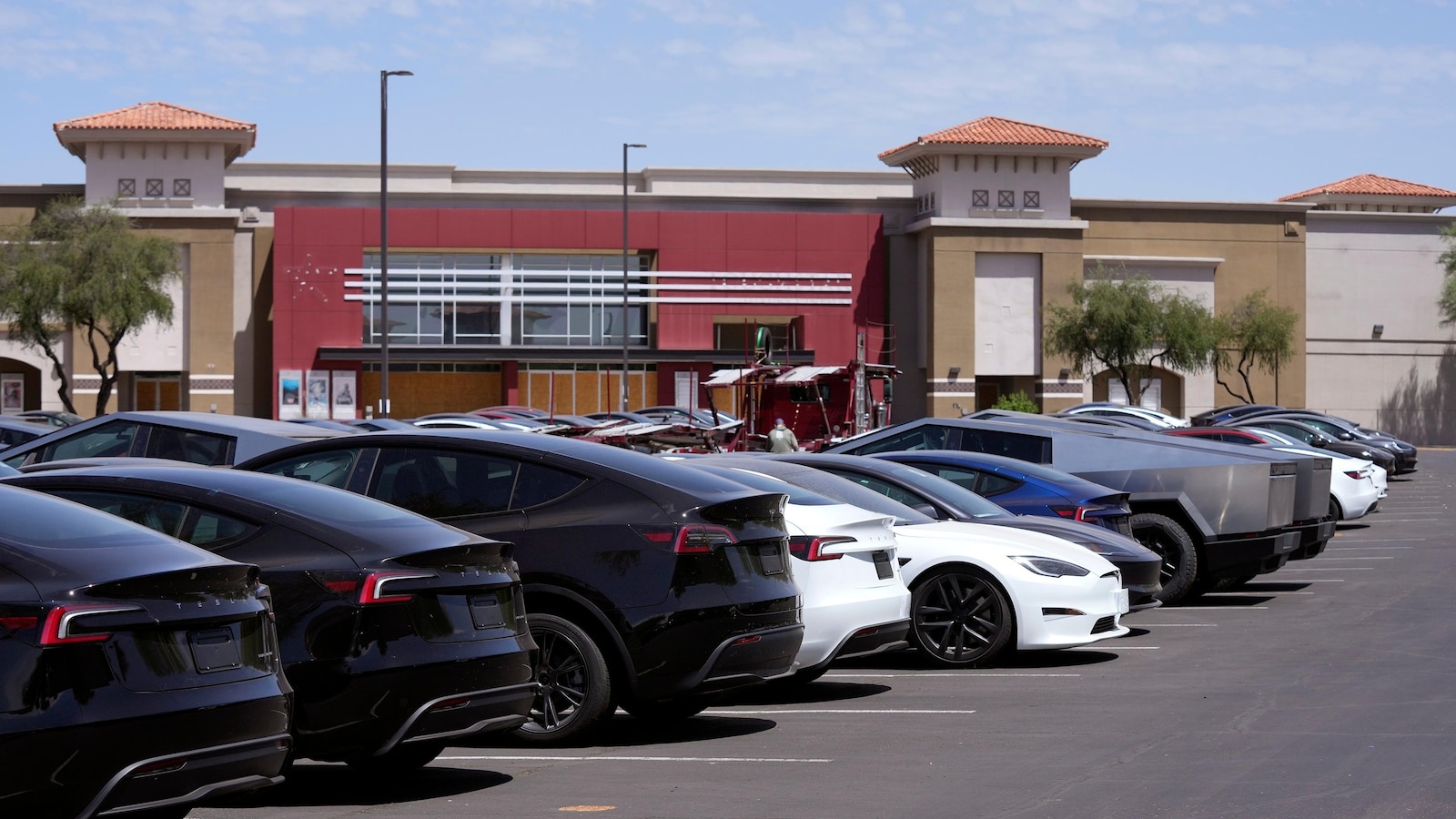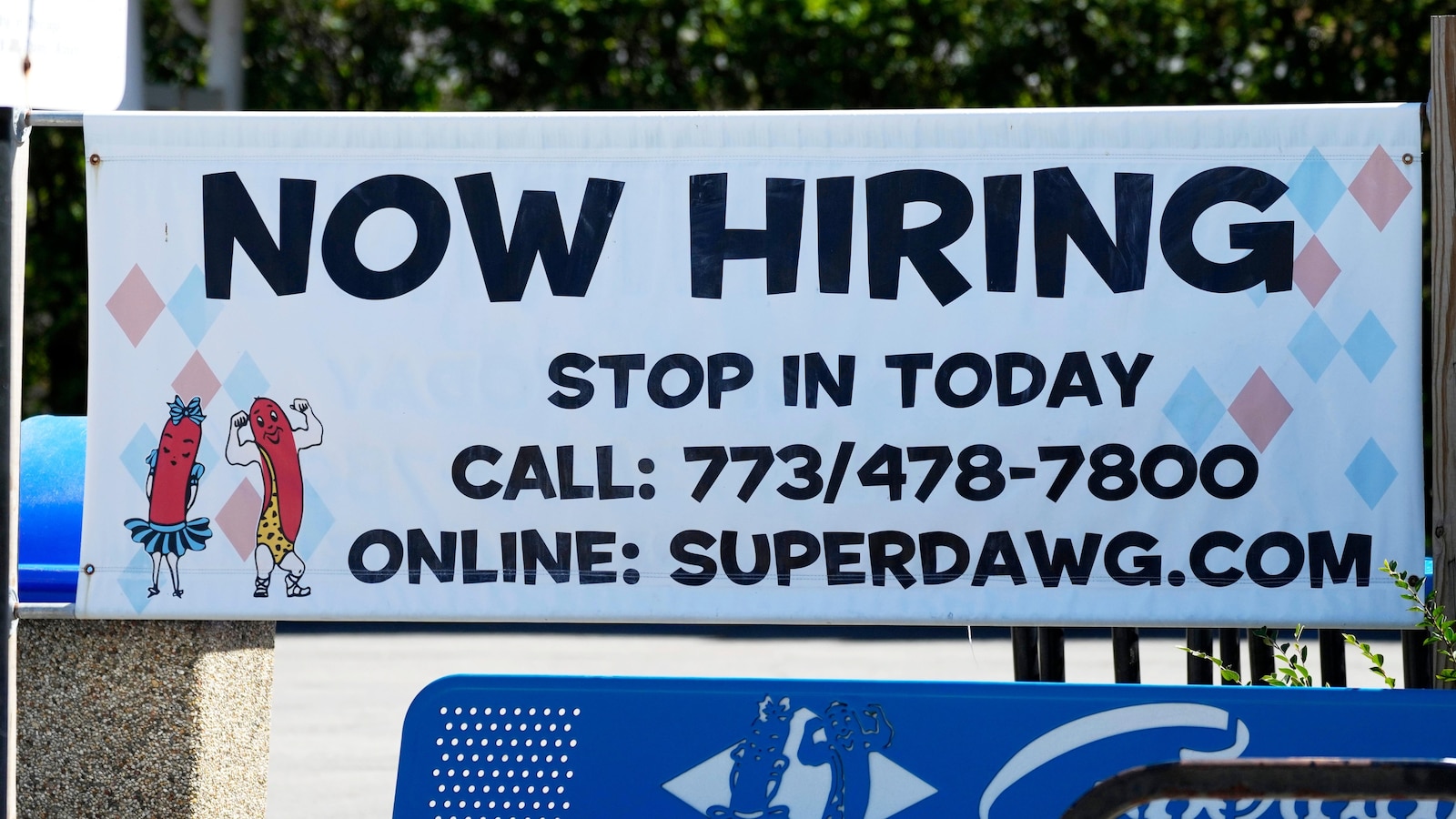
DETROIT — Tesla’s global sales fell for the second straight quarter despite price cuts and low-interest financing offers, another sign of weaking demand for the company’s products and electric vehicles overall.
The Austin, Texas, company said Tuesday that it sold 436,956 vehicles from April through June, down 4.8% from 466,140 sold the same period a year ago. But the sales were better than the 436,000 that analysts had expected.
Demand for EVs worldwide is slowing, but they’re still growing for most automakers. Tesla, with an aging model lineup and relatively high average selling prices, has struggled more than other manufacturers. Still it retained the title of the world’s top-selling electric vehicle maker.
For the first half of the year, Tesla sold more than 910,000 vehicles worldwide, handily beating China’s BYD, which sold 726,153.
Tesla’s sales decline comes as competition is increasing from legacy and startup automakers, which are trying to nibble away at the company’s market share. Most other automakers will report U.S. sales figures later Tuesday.
Tesla gave no explanation for the sales decline, which is a harbinger of what to expect when it posts second-quarter earnings on July 23.
Nearly all of Tesla’s sales came from the smaller and less-expensive Models 3 and Y, with the company selling only 21,551 of its more expensive models that include X and S, as well as the new Cybertruck.
The sales decline came despite Tesla knocking $2,000 off the prices of three of its five models in the United States in April. The company cut the prices of the Model Y, Tesla’s most popular model and the top-selling electric vehicle in the U.S., and also of the Models X and S.
The April cuts reduced the starting price for a Model Y to $42,990 and to $72,990 for a Model S and $77,990 for a Model X. Last week, Tesla lopped $2,340 off the $38,990 base price of some newly revamped Model 3s that were in the inventory shipped to its stores.
In addition, Tesla in May offered 0.99% financing for up to six years on the Model Y. In June, it offered interest as low as 1.99% for three years on the rear-wheel-drive Model 3. Typical new-vehicle interest rates average just over 7%, according to Edmunds.com.
Also during the quarter, Tesla knocked roughly a third off the price of its “Full Self Driving” system — which can’t drive itself and so drivers must remain alert and be ready to intervene — to $8,000 from $12,000, according to the company website.
Jessica Caldwell, head of insights for Edmunds.com, said Tesla is having trouble in a market where most early adopters already have EVs, and mainstream buyers are more skeptical that electric cars can meet their needs. “They’re more pragmatic. They want to know where am I charging? What will this cost me?” she said.
Tesla also has a set of unique problems, mainly a model lineup that doesn’t look much different than it did years ago. With Tesla’s price cuts, used vehicle prices tumbled. Anyone wanting a Tesla can get a far better deal buying a used one, Caldwell said. “If you’re looking at monthly payments, it’s hard to compete against,” she said.
Caldwell doesn’t see any big catalyst this year that would boost Tesla sales unless gasoline prices spike. The new Cybertruck is being sold only in small numbers, and the rest of the lineup is old. “Most people would be hard pressed to figure out which one is the newer one and which one is the older one,” she said.
Wedbush analyst Dan Ives, who normally is bullish on Tesla stock, wrote in an email that he expects Tesla to hit analyst estimates for second-quarter sales due to higher incentives. He wrote that “still demand challenges abound,” but year-over-year sales growth is “doable but a stretch” this year.
In its letter to investors in January, Tesla predicted “notably lower” sales growth this year. The letter said Tesla is between two big growth waves, one from global expansion of the Models 3 and Y, and a second coming from the Model 2, a new, smaller and less expensive vehicle with an unknown release date.
Shares of Tesla rose 4.1% before Tuesday’s opening bell. They are down about 12% since the start of the year and recently have erased larger losses from prior months. Tesla shares had been down more than 40% earlier in the year.
Tesla is scheduled to unveil a purpose built robotaxi at an event on Aug. 8.
Despite price reductions and efforts to boost sales, Tesla has reported a decline in sales for the second consecutive quarter, surpassing analyst predictions. This news comes as a surprise to many, as the electric car company has been a leader in the industry and has seen significant growth in recent years.
Tesla’s sales decline can be attributed to a number of factors, including increased competition in the electric vehicle market, production challenges, and changing consumer preferences. The company has faced stiff competition from traditional automakers such as Ford and GM, who have been ramping up their electric vehicle offerings in response to growing demand for environmentally friendly cars.
In addition, Tesla has struggled with production challenges at its factories, leading to delays in delivering vehicles to customers. This has frustrated some potential buyers and may have contributed to the decline in sales.
Changing consumer preferences may also be playing a role in Tesla’s sales decline. As more automakers enter the electric vehicle market, consumers have more options to choose from. Some may be opting for other brands that offer similar features at a lower price point.
Despite these challenges, Tesla remains optimistic about its future prospects. The company has recently announced plans to expand its product lineup with new models, including a compact SUV and a pickup truck. In addition, Tesla is investing heavily in its battery technology and charging infrastructure to support the growth of electric vehicles.
While Tesla’s sales decline is concerning, it is important to remember that the company is still a leader in the electric vehicle market and has a loyal customer base. With continued innovation and investment, Tesla may be able to reverse this trend and regain its momentum in the coming quarters.


